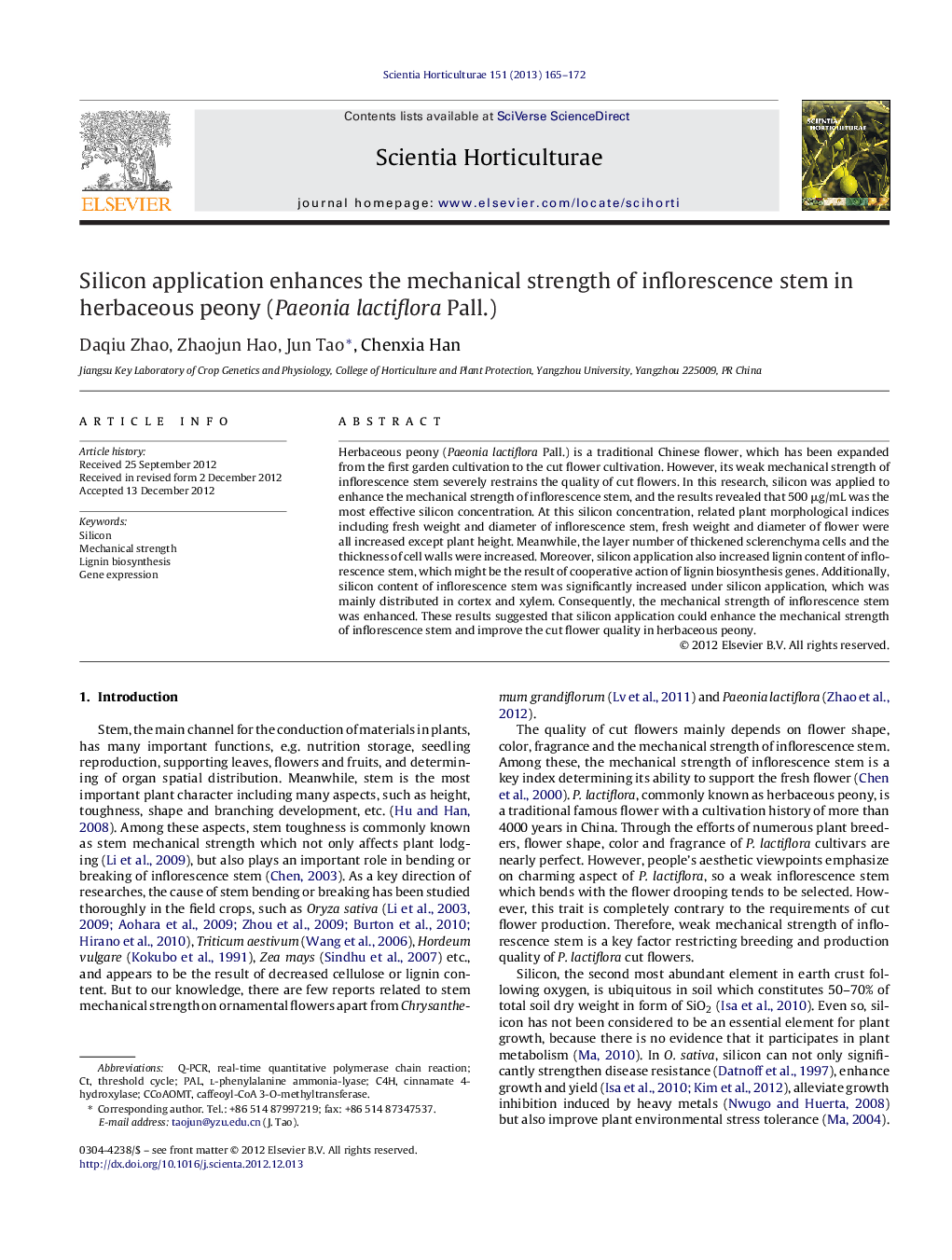| Article ID | Journal | Published Year | Pages | File Type |
|---|---|---|---|---|
| 4567422 | Scientia Horticulturae | 2013 | 8 Pages |
Herbaceous peony (Paeonia lactiflora Pall.) is a traditional Chinese flower, which has been expanded from the first garden cultivation to the cut flower cultivation. However, its weak mechanical strength of inflorescence stem severely restrains the quality of cut flowers. In this research, silicon was applied to enhance the mechanical strength of inflorescence stem, and the results revealed that 500 μg/mL was the most effective silicon concentration. At this silicon concentration, related plant morphological indices including fresh weight and diameter of inflorescence stem, fresh weight and diameter of flower were all increased except plant height. Meanwhile, the layer number of thickened sclerenchyma cells and the thickness of cell walls were increased. Moreover, silicon application also increased lignin content of inflorescence stem, which might be the result of cooperative action of lignin biosynthesis genes. Additionally, silicon content of inflorescence stem was significantly increased under silicon application, which was mainly distributed in cortex and xylem. Consequently, the mechanical strength of inflorescence stem was enhanced. These results suggested that silicon application could enhance the mechanical strength of inflorescence stem and improve the cut flower quality in herbaceous peony.
► Best application concentration of sodium silicate was 500 μg/mL in P. lactiflora. ► Silicon application caused increase in morphological indices except plant height.(AQ:For Edit). ► Layer number of thickened sclerenchyma cells and thickness of cell walls increased. ► Lignin and silicon content increased, and silicon was mainly in cortex and xylem. ► Consequently, its mechanical strength of inflorescence stem was enhanced.
